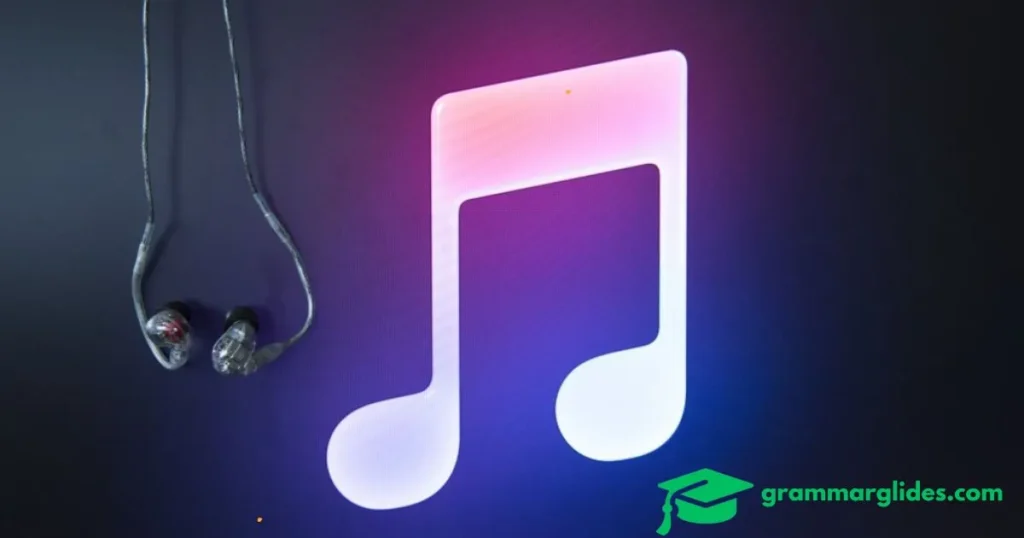“ Right Word Segway vs. Segue Should You Choose in your life”
In the English language, certain words can confuse even the most seasoned speakers. Two such words are Segway and Segue. While these words may sound similar, their meanings and uses are vastly different. Segway refers to a personal transportation device, while segue is a term used to describe a smooth transition between ideas or scenes, especially in music and speech. Understanding the correct context for each word is essential, as misusing them can lead to confusion.
If you’ve ever found yourself unsure whether to use Segway or segue, you’re not alone. Many people mistakenly mix up these two words due to their similar pronunciation. In this blog, we’ll clear up the confusion and provide clarity on when and how to use each word properly. Whether you’re writing, speaking, or just navigating through the English language, understanding these distinctions will help you avoid common pitfalls.
Let’s dive deeper into the definitions and correct usage of Segway and segue, explore examples of both in everyday language, and provide you with helpful tips to keep these words straight in your mind.
The Origin and Definition of Segue
Definition of Segue
The word segue comes from the Italian word “segue,” meaning “it follows.” In English, it refers to a smooth transition from one idea, subject, or scene to the next. It is commonly used in music, film, and speech to describe a seamless shift between different parts of a composition or conversation.
- Example 1: In a speech, a segue might occur when the speaker smoothly transitions from one topic to another without a break.
- Example 2: A segue in music could occur when a composer moves from one musical theme to another without a noticeable pause.
- Example 3: In a movie, a segue happens when the scene changes fluidly, allowing the storyline to continue without interruption.
The Musical Roots of Segue
The term segue has strong ties to the world of music. Historically, musicians would use it to indicate a smooth transition between musical passages or movements. This usage has carried over into everyday language, where it is now commonly used to describe any seamless transition.
- Example 1: A classical composer may use a segue to transition from one movement to another in a symphony.
- Example 2: In jazz, musicians often rely on segue to move smoothly between improvisational sections.
- Example 3: In modern pop songs, a segue may link different parts of the song together to maintain the rhythm and flow.
Example of Segue in Music

Consider a scenario where a DJ is playing a set. After finishing a track, they might seamlessly fade into the next song, creating a smooth segue from one beat to the next. This smooth transition is key to maintaining the energy of the crowd.
- Example 1: A DJ might segue from an upbeat dance song into a slower, more melodic track, ensuring the transition doesn’t disrupt the mood.
- Example 2: A movie soundtrack often uses a segue to shift between different moods—such as from a tense scene to a calmer one—without breaking the flow.
- Example 3: In theater, actors may use a segue to transition from one scene to the next, ensuring the story moves forward fluidly.
Famous musical segues:
| Song/Album | Artist | Description of Segue | Impact on Music |
| Abbey Road (Medley) | The Beatles | A seamless blend of multiple songs in a single, continuous piece, creating an unforgettable musical journey. | Revolutionized album transitions, setting a new standard for seamless flow. |
| Dark Side of the Moon | Pink Floyd | The transition from “Breathe” to “On the Run” creates a perfect fusion of atmospheric soundscapes and narrative. | Pioneered the art of conceptual album segues, enhancing storytelling. |
| The Wall | Pink Floyd | A series of interconnected songs that flow smoothly, telling a complete, cohesive story. | Known for its thematic segues that blur the lines between tracks. |
| The Rise and Fall of Ziggy Stardust | David Bowie | The intro of “Five Years” segues into “Soul Love” seamlessly, giving a sense of continuity. | Set a blueprint for cohesive album experiences in rock music. |
| Moving Pictures | Rush | The opening track “Tom Sawyer” segues smoothly into “Red Barchetta,” tying together the themes of freedom and escape. | Defined progressive rock’s ability to link songs in unique ways. |
Segue in Everyday Language
In everyday language, segue is commonly used to describe any smooth transition, whether in conversation, presentations, or writing. It helps keep things moving without abrupt changes that might confuse the audience.
- Example 1: “Let’s segue into discussing our next project now that we’ve covered the budget.”
- Example 2: “The discussion about team collaboration was a perfect segue into talking about leadership strategies.”
- Example 3: “Her personal story served as a segue into the main topic of the seminar.”
Examples of Segue in Sentences
Here are a few examples to show how segue can be used in different contexts:
- Example 1: “The manager’s brief update on company performance was the perfect segue into the discussion about future goals.”
- Example 2: “After a quick break, we’ll segue into the next chapter of our training session.”
- Example 3: “The movie’s sudden segue from comedy to drama caught the audience off guard.”
Understanding Segway: The Personal Transporter
Features of the Segway
Now that we’ve covered segue, it’s time to dive into Segway—the personal transporter. A Segway is an electric, two-wheeled, self-balancing vehicle. It was invented by Dean Kamen in 2001 and became widely popular as a new way to move around in urban areas.
- Example 1: The Segway uses sensors to balance the rider, making it easy to control with just a slight shift in weight.
- Example 2: Segways are commonly used for guided city tours, allowing tourists to explore more ground than on foot.
- Example 3: Some companies use Segways for employees to get around large warehouses or campuses efficiently.
Segway Models and Specifications
There are several models of Segway, each with its own specifications and intended uses.
| Model | Description | Key Features | Ideal Use |
| Segway i2 SE | Standard urban commuter model | – Self-balancing- Lightweight frame- High-performance lithium battery- Smooth ride | Ideal for commuting in urban areas, guided tours |
| Segway x2 | Off-road model designed for rugged terrain | – Large, rugged wheels- Built for outdoor use- Enhanced shock absorption- All-terrain capabilities | Best for off-road adventures, rough terrain exploration |
| Segway MiniPro | Compact version designed for personal use and easy storage | – Smaller frame- Bluetooth control- Lightweight- Easy to store | Perfect for short distances, personal transportation |
| Segway Ninebot S | A smaller, more affordable personal transporter with enhanced portability | – Compact design- Faster acceleration- Smart mobile app features- Affordable pricing | Great for short commutes, navigating tight spaces |
| Segway Ninebot S-Max | Larger, more powerful version of the Ninebot S for adults and longer rides | – Stronger motor- Higher speed- Longer range- Better for heavier riders | Suitable for commuting or longer distance rides |
- Example 1: The Segway i2 SE is designed for urban commuting and is known for its lightweight frame and efficient battery.
- Example 2: The Segway x2 is an off-road model built to handle rough terrain and is often used for outdoor adventures.
- Example 3: The Segway MiniPro is a more compact version, designed for personal use and easy storage.
Roil vs. Royal Which Word Should You Use?
Spelling and Pronunciation: Why the Confusion Persists?
Both Segway and segue are often mispronounced and misspelled due to their similar sounds. The key difference lies in their context and usage.
Common Pronunciation Mistakes
Many people mistakenly pronounce segue as “seg-way,” mixing it up with Segway, the transporter. The correct pronunciation of segue is “seg,” with a hard “g,” not “way.”
- Example 1: Mispronouncing segue as “seg-way” can confuse listeners, especially when discussing transitions in music or conversation.
- Example 2: Referring to the Segway transporter as “segue” can make the conversation unclear, as the two terms mean entirely different things.
- Example 3: Correctly pronouncing segue helps ensure the speaker’s intent is understood, whether in casual speech or professional discussions.
Spelling and pronunciation often create confusion because of the quirky nature of the English language. With similar sounds and irregular rules, it’s easy to mix up words like “segue” and “Segway.”
Homophones in the English Language
Both Segway and segue are examples of homophones, words that sound similar but have different meanings and spellings. This can lead to confusion, especially for non-native speakers or those unfamiliar with the terms.
Other Examples of Homophones
- Their vs. There
- Peace vs. Piece
- Bare vs. Bear
- Write vs. Right
- Read (present) vs. Read (past)
Context Matters: When to Use Segue vs. Segway
Understanding the difference between segue and Segway boils down to context. Let’s look at when to use each term.
When to Use Segue
You should use segue when referring to a smooth transition between two ideas, topics, or sections. This applies to writing, music, speeches, and everyday conversations.
- Example 1: “After a short break, we will segue into the Q&A session.”
- Example 2: “His story was a perfect segue into the topic of leadership.”
- Example 3: “Let’s segue into discussing the next item on our agenda.”
When to Use Segway
Segway refers to the personal transportation device, so you should use this term when talking about that specific electric vehicle.
- Example 1: “We rented a Segway for the city tour.”
- Example 2: “The police officer rode a Segway during the parade.”
- Example 3: “You can easily navigate through crowded streets using a Segway.”
Memorable Mnemonics to Avoid Mix-Ups
Mnemonics for Segue
- Smooth transition, Ease in the shift, Good flow, Understand the change, Everything connects.
- See the connection, Ease into the next, Gently move forward, Undisturbed, Endless flow.
- “A segue is a shift, not a ride.”
- Think segue like “to go,” without wheels.
- Speech shifts, Easy transitions, Good flow, Unbroken, Everything’s smooth.
Mnemonics for Segway
- Self-balancing, Electric, Going forward, Wheels in motion, Allows easy transport, Your ride.
- “Segway is the Smart Electric Glider With Automatic Yaw control.”
- Think Segway like a “smooth way to go.”
- Smooth ride, Electric-powered, Great for transport, Wheel-based, Always mobile, You’ll glide.
- Smart way to go, Easy on your feet, Glide through crowds, Without much effort, Allows you to move, You’ll love it.
Common Misuses in Pop Culture and Media
Both Segway and segue are often misused in popular culture and media.
Examples of Misuses
- Referring to the Segway as a “segue” when discussing the transporter.
- Saying “Let’s Segway into the next topic” when they mean “segue.”
- Mispronouncing segue as “seg-way.”
- Confusing the Segway with other types of personal vehicles like scooters or hoverboards.
- Incorrectly calling a transition in a speech a “Segway.”
Impact of Misuses
Misusing segue and Segway can lead to confusion, especially in professional settings or educational materials. It can also affect the credibility of the speaker or writer if they confuse the terms in their content.
Key Insight
1. What’s the difference between Segway and segue?
Segway is a personal transportation device, while segue refers to a smooth transition from one subject or scene to another.
2. How do I pronounce segue correctly?
Segue is pronounced “seg,” with a hard “g,” not “seg-way.”
3. When should I use Segway?
Use Segway when referring to the self-balancing vehicle or related devices.
4. Can I use segue in casual conversations?
Yes, segue is commonly used in conversations to describe smooth transitions between topics.
5. How do I avoid confusing Segway and segue?
Remember, Segway is a vehicle, and segue is a transition. Keeping the context in mind will help prevent mix-ups.
Wrap-Up
In summary, while Segway and segue may sound similar, they are distinct terms with unique meanings. Segway is the name of a personal transporter, while segue refers to a smooth transition, particularly in music, speech, or writing.
By understanding the proper contexts for each word, you can enhance your communication skills and avoid common errors. Whether you’re talking about a personal vehicle or making smooth transitions in your speech, knowing the right word to use will ensure clarity and precision in your language.

Hi! I’m Lauren Reynolds, the author of Grammar Glides. I create easy-to-follow content that helps you master English with confidence. Let’s make learning English simple and enjoyable together!

